Ever-flowering begonia: types and recommendations for care

Ever-flowering begonia is an ornamental plant that can be grown both outdoors and indoors. In the second case, begonia behaves like a perennial, but in the garden it is capable of development only for one year.
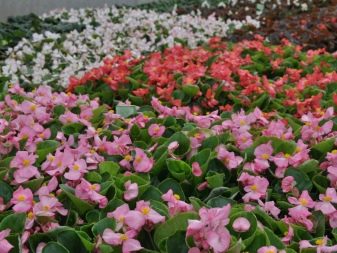

Description
The ever-flowering begonia belongs to the begonia family. It is a herbaceous hybrid characterized by its diminutive size. The height of the shrub reaches 30 centimeters, and the sturdy stem has a large number of branches. However, the smallest specimens grow only up to 8 centimeters. Rounded succulent leaves are slightly lowered at the edges. Their color changes from light green to dark green, and sometimes turns out to be burgundy or red-brown. On the peduncle of the plant, from a couple to 4 flowers are formed.
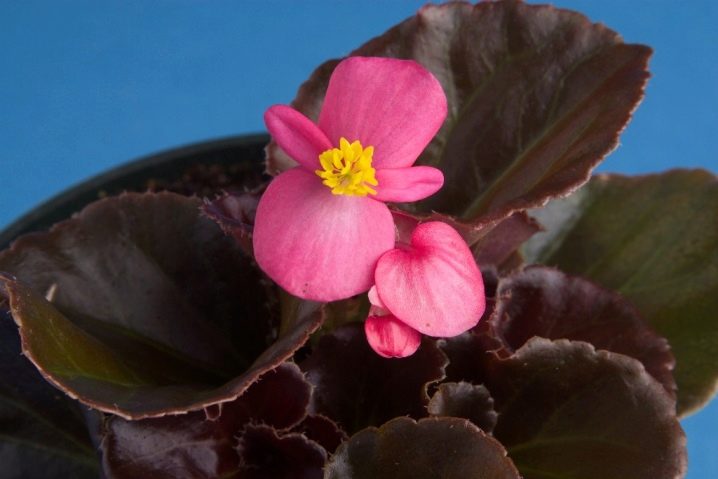
Same-sex buds are double or simple.
The flower petals can be white or red. Some varieties combine both shades: most of the petal is snow-white, and the border is covered with stripes of bright pink. Male buds have four petals, while female buds have one more. The diameter of the flowers ranges from 3 to 5 centimeters. Seeds of ever-flowering begonia are extremely small in size, resemble dust and are collected in capsule fruits. They are dark brown in color and have the ability to climb over a three-year period.

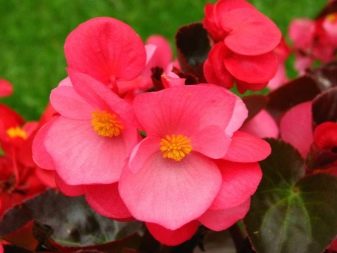
Varieties
Numerous varieties of ever-flowering begonias can be divided into the following types: tall, medium-sized and low-growing. It is worth mentioning that begonia can be either indoor or growing outdoors. "Luchenets F1" is a stunted hybrid, whose height barely reaches 20 centimeters. The flowers grow small in diameter, most of the petals are white, and the ends are pink. Rounded petals form a highly branched bush of bright green color. This variety is capable of blooming throughout the season until frost appears.
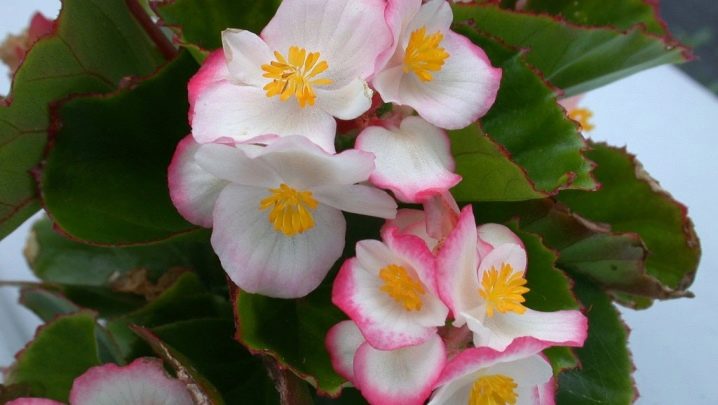
"Senator Pink F1" considered a classic variety, characterized by the appearance of small flowers collected in a brush. It grows well both outdoors and at home. The neat bushes are strongly branched and covered with leaves of a dark bronze hue.
Begonia pink ever-flowering Boushin reaches a height of 40 centimeters. During flowering, oval bushes are covered with light pink buds. A clear advantage of this variety is the ability of begonias to self-purify from wilted flowers. The color of the leaves changes depending on the lighting.
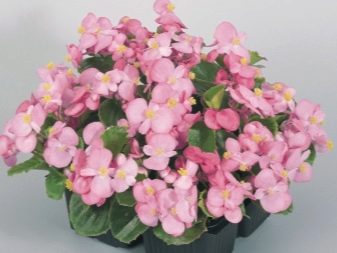
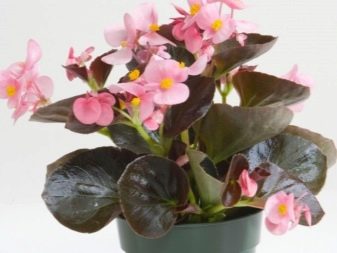
Ever-flowering begonia Havana Scarlet forms bushes, the height of which varies from 20 to 25 centimeters. The leaves are painted in a shade of bronze, and the flowers grow bright red.
Variety Mix F1 reaches a height of 20 centimeters. The diameter of the opened flowers ranges from 3 to 5 centimeters. This one-year hybrid is not susceptible to the negative influence of weather conditions, and therefore grows well in the open field. The foliage can be colored either emerald or bronze.
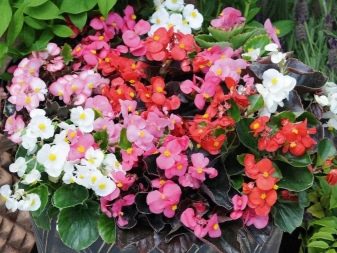

Variety Olomouc is a low-growing variety, the height of which ranges from 18 to 20 centimeters. Flowers grow small in size, but beautiful white. "Bada Boom" is also a compact plant.The leaves are bronze colored, and simple flowers can be white, pink, or deep red. Variety "Ambassador F1" combines begonia hybrids showing seven different shades. The unpretentious bush is abundantly covered with green leaves.

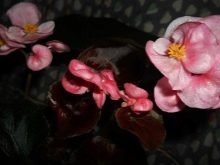
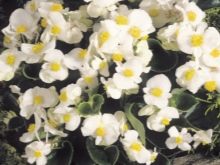
Landing
It is necessary to sow begonia in a soil mixture with either neutral or low acidity from 5.5 to 6.5. The substrate can be either purchased ready-made or compiled independently by mixing coarse sand and garden soil. The planter should be taken quite wide and shallow. The height of the container should be between 15 and 20 centimeters.

The root system of ever-flowering begonia is small, so there is no need to plant it in a deep pot.
The bottom of the tank must be covered with a drainage layer, which prevents stagnation of water. Typically, the drainage height is 2 to 4 centimeters. Having filled up the substrate, it must be compacted so that a centimeter gap remains between the edge of the pot and the surface. Over time, the size of the bush will increase, and it will need a larger vessel. The transplant is carried out by transshipment with the preservation of the earthen coma and the removal of old leaves.
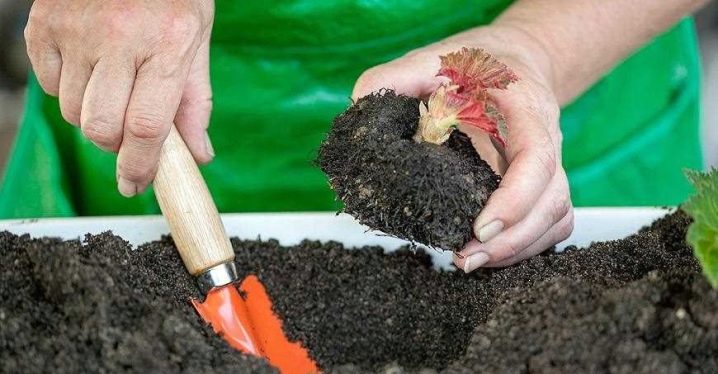
When the plant is to be grown at home, the pot should be placed in a sunny window, such as facing south, east, or west. In the case of a north window, you will have to install additional lighting. It is important to create sufficient lighting for the begonias, otherwise the bush will begin to stretch ugly and lose its beauty in color. Planting begonias outdoors requires pre-growing seedlings.
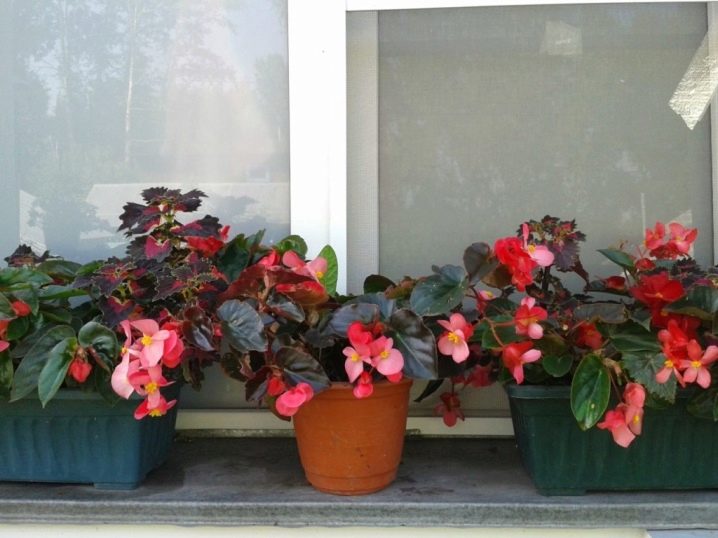
Care
Caring for ever-flowering begonia at home includes maintaining the required temperature and humidity level. The plant is quite loyal to high temperatures, but cold weather can have a detrimental effect on its development. In the worst case, not only will the cultivation stop, but the begonia itself will simply die. However, in the winter season, the bush should not be placed near the batteries. The optimum moisture content is 50%. If the level rises, then the plant begins to rot, and if it decreases, it dries up and changes color to an unpleasant brown. Ever-flowering begonia reacts poorly to direct spraying, as dark spots appear on the leaves and flowers.
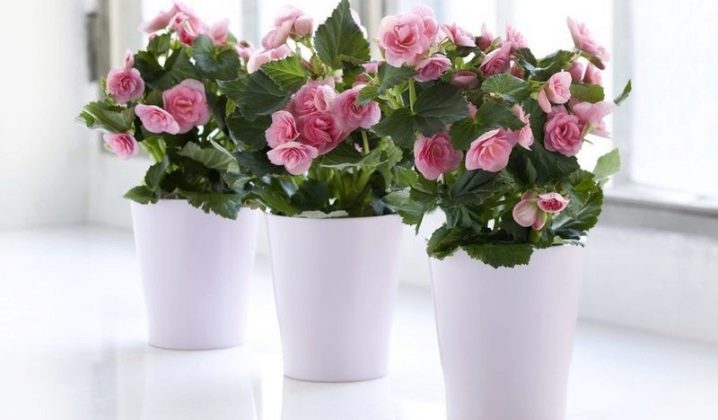
However, the liquid can be sprayed around the plantings, simply place a container of water next to the pot, or place it on a tray filled with moistened expanded clay.
Irrigation of begonias should be carried out using settled or even boiled water. You can also use melt or rain liquid warmed up to room temperature. It is more convenient to determine the frequency of watering by the state of the upper soil layer. It is important not to allow stagnation of water or drying out of the soil. To avoid overflows, you can use the bottom irrigation system, when the liquid is poured immediately into the sump. The procedure is recommended either in the morning or in the evening, when the exposure to sunlight is minimal.
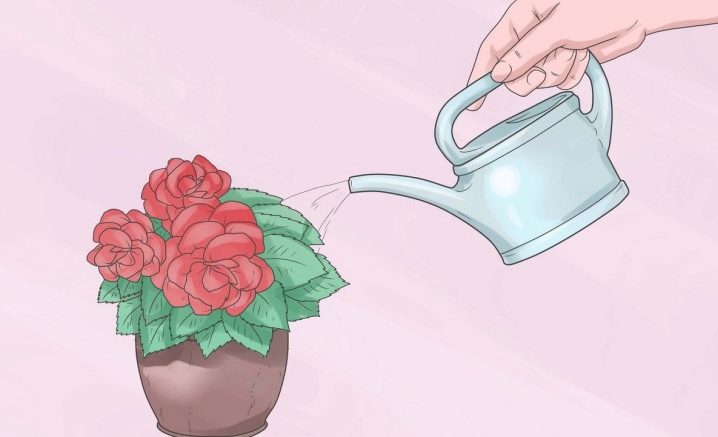
Fertilizers should be applied in spring and summer once every two weeks - during this period the plant is actively developing. It is more convenient to purchase ready-made complexes immediately. In winter, the frequency of application can be limited to once a month. In the case when once a year the bush is transplanted into a fresh substrate rich in humus, additional use of organic fertilizers is not required. If the seedlings have already grown stronger and have reached the size of a mature plant, then preference can be given to solutions with a low nitrogen content. Potassium and phosphorus, on the contrary, must be present in full.

A branchy bush is transplanted as it grows. While the plant is still young, it should be just a transplant with a complete renewal of the soil, in the case of mature specimens, you can limit yourself to a partial replacement of the top layer.Although the bush usually does not exceed 40 centimeters in height, pruning still has to be done, mainly to remove weak shoots and shorten unnecessarily elongated ones. As a rule, the procedure is carried out in early spring.
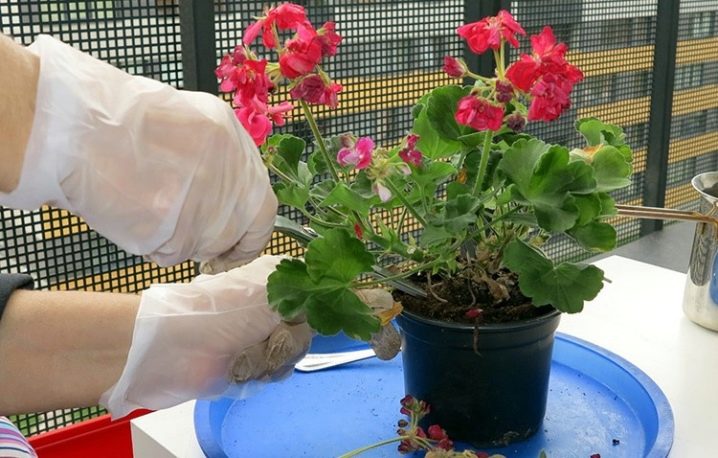
Reproduction
Growers most often choose to propagate the plant either by cuttings or by seeds. Cutting allows you to maximize the preservation of the properties of the original material, but begonia grown from seeds does not always repeat the parent variety. Reproduction using cuttings is usually carried out in the summer, when the green leaves are actively developing. Having separated the leaf together with the stem, it is necessary to shorten its upper part by one third. The cut must be processed, and after the cutting, root it by about one centimeter.
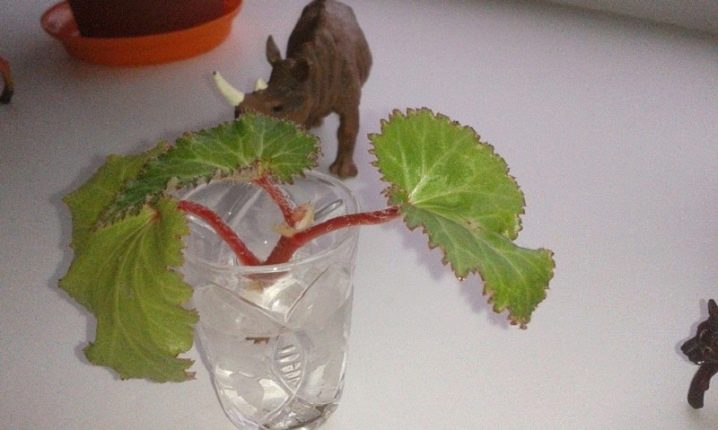
The plantings are immediately sprayed with settled water and put into a homemade greenhouse, which is formed from an ordinary piece of polyethylene. Then the beds are removed where it is warm and light, and the lighting should be diffused. It will be time to dive into disposable cups when the first leaves appear on the sprouts. The flower should be transplanted into pots after a month or even one and a half.

To propagate ever-flowering begonia with seeds, you need a box with a height of 5 to 7 meters, as well as a seedling substrate. Dusty seeds should be mixed with sand for convenience. The plantings cannot be watered, but they must be covered with a glass piece so that there is a gap between the walls and the roof. The box itself should be placed with a slight slope so that condensation does not get inside the structure. A dive is carried out when two leaves appear at the sprouts.
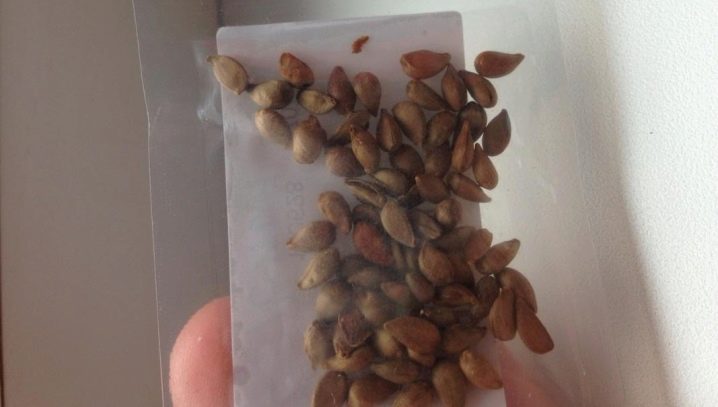
Three to four formed plates already allow you to transplant begonias into pots.
How to keep in winter?
Some experts recommend pruning the begonias in late fall so that they can successfully survive into spring. You will have to cut off the entire aerial part, and then place the pot where it is cold and dark. In March, the plant is again exposed to a lighted place. Other experts believe that the bushes can remain in their natural state, that is, as they developed over the summer-autumn period. In this case, it will be important to keep the temperature at 20 degrees when flowering is expected, and at 15 degrees when the plant is at rest. Fertilization is slowed down until daylight hours increase to 12 hours.

Diseases and pests
Most often, ever-flowering begonia becomes a target for attacks by aphids and spider mites. If the plant is indoor and does not grow in a flower bed, then it is better to treat with organic products. For example, a bush can be sprayed with an infusion of onion peel or finely chopped turnip. Pest control is carried out once a week until the signs of damage disappear completely.
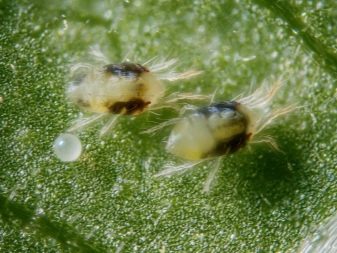
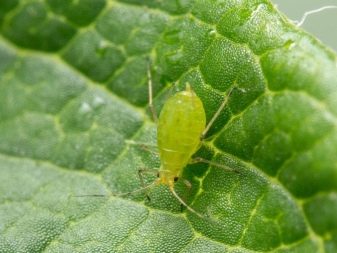
The disease from which begonia suffers is easier to determine by the state of the bush itself. For example, if black spots began to appear on the leaves, then we are talking about bacterial wilting. On the contrary, the appearance of a white coating on the surface signals the defeat of powdery mildew. In both cases, fungicides such as Mikosan will help to cope with the problem. Unfortunately, begonia will have to be thrown away if it is sick with a viral mosaic, which is determined by the appearance of yellowness on the tips of the leaves, root rot and nematodes.
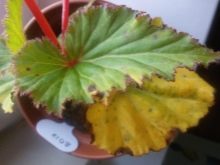
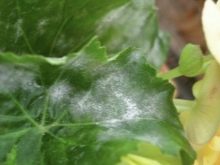
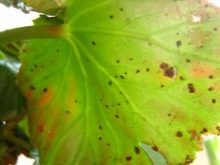
For breeding and preservation of ever-flowering begonia, see the video below.































The comment was sent successfully.